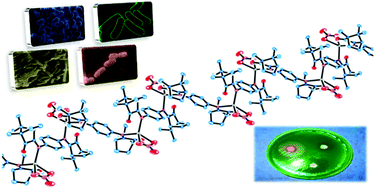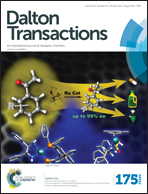Antibacterial activity of silver camphorimine coordination polymers†
Abstract
Five new silver camphorimine complexes of general formula [Ag(NO3)YL] were synthesized and fully characterized using spectroscopic and analytical techniques. The structure of [Ag(NO3)(OC10H14NC6H4NC10H14O)] (III) was analyzed using single crystal X-ray diffraction, showing that it arranges as a coordination polymer formed by sequential Ag(NO3) units bridged by the bi-camphor ligand (2AL). The antimicrobial properties of the new complexes were screened using the disk diffusion method and their Minimal Inhibitory Concentrations (MIC) were assessed against selected bacterial strains of the Gram-positive Staphylococcus aureus and the Gram-negative Escherichia coli, Pseudomonas aeruginosa, and Burkholderia contaminans. The lowest MICs were observed for III, with estimated values of 72, 20, 32 and 19 μg mL−1 for S. aureus, E. coli, B. contaminans, and P. aeruginosa, respectively. In the case of S. aureus, similar MIC values were obtained for silver nitrate and compound III. All five compounds were bactericidal when used in concentrations equal or above the MIC value, as found by enumerating the total colony forming units (CFUs) after incubation in their presence.


 Please wait while we load your content...
Please wait while we load your content...